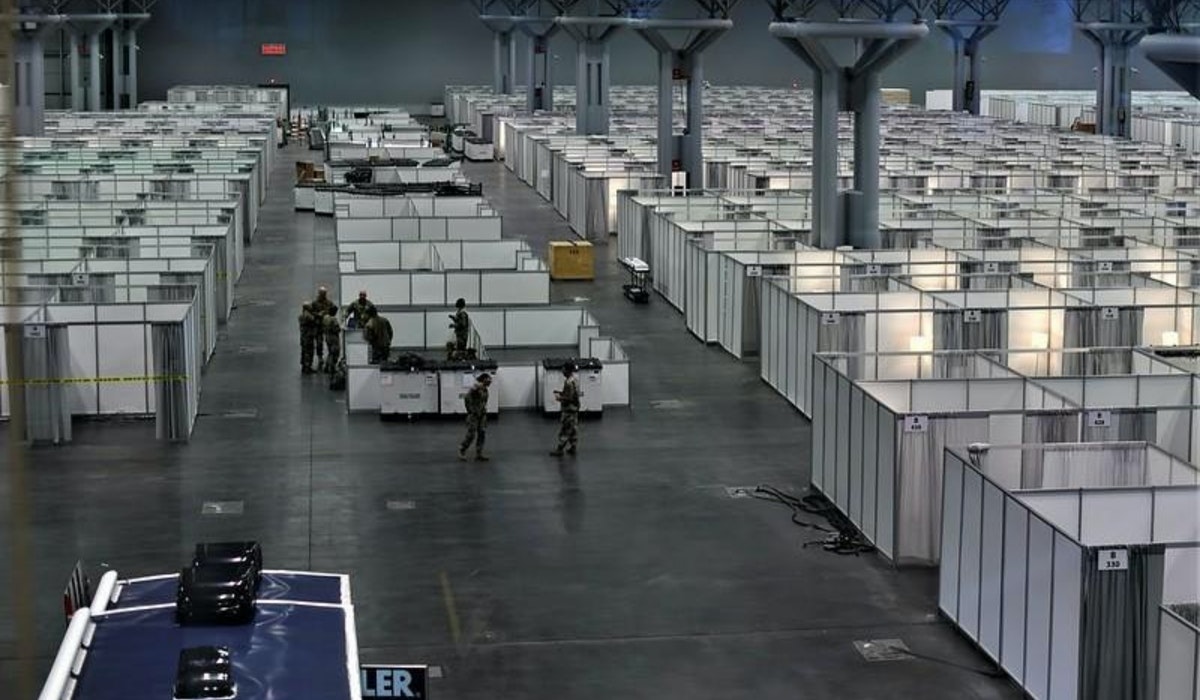ARTICLE SUMMARY:
Is your device company aware of the awards available from the US military for cutting-edge medical technologies that address the COVID-19 pandemic and are FDA EUA submission-ready? MTEC’s William Howell offers advice to device companies looking to submit a proposal, and also previews upcoming needs for novel, rapidly deployable solutions in the areas of telehealth and ventilation.
 William Howell
William Howell
Chief Operating Officer
Medical Technology Enterprise Consortium (MTEC)
William.Howell@tunnellgov.com
William Howell, a 35-year US Department of Defense retiree, leads MTEC’s technical product development activities including biologics, drugs, and devices. He oversees research project management, coordinates with US Army Medical Research and Development Command, technical project execution, monitors the development of solicitations, and assists in the approach to other federal agencies to garner additional funding and support.
Readiness: A word that aptly describes the state of the US military as it prepares to meet and overpower any threat. At the moment, that threat is novel, stealthy, and pandemic in nature.
Military medicine is on the front lines of the US COVID-19 response, bringing in active and reserve doctors, nurses, and medical technicians to support local healthcare systems, working closely with the Department of Health and Human Services. Some 30,000 National Guard service members are providing frontline care to community-based testing, distributing personal protective equipment, medical supplies, food, and water in hard-hit areas of the country. This month, for the first time in its 48-year history, the Uniformed Services University of the Health Sciences—the military's medical school in Bethesda, MD—graduated more than 200 nurses and doctors early so they can deploy to the pandemic’s front lines. Military medical research is working in partnership with other federal agencies to develop diagnostic technologies, as well as future treatments and vaccines to fight this and other public health threats. In addition, the military is fighting COVID-19 infections at its own hospitals, bases, and other facilities around the world.
As another example of readiness, innovative medical technologies are developed for military populations, including those serving on global battlefields, through the recruitment efforts of organizations such as the Medical Technology Enterprise Consortium (MTEC). MTEC, an international, non-profit partnership of leading bioscience experts, medical technologists, innovative small companies, and research universities, is entering its fifth year of a 10-year Other Transaction Agreement (OTA) with the US Army Medical Research and Development Command, intended primarily for offering contract awards for innovative medical technologies that can serve the US military.
Currently, MTEC is seeking solicitations for partnerships and contract awards for companies that have developed novel technologies, devices, and approaches for the detection of exposure, prevention, containment, and treatment of COVID-19 and future emerging threats, says William Howell, the organization’s Chief Operating Officer, in an April 1 interview with Market Pathways. (Also see “MedTech in the Military - Saving Lives On and Off the Battlefield,” MedTech Strategist Community Blog, January 29, 2019.)
MTEC awarded about $79 million worth of contracts in 2019 as part of this initiative, and it plans to increase this amount in 2020. It is funded by private support as well as the US government including, most recently, money from the $8.3 billion coronavirus spending bill that was signed into law in early March, and from the $2.3 trillion pumped into the US economy in early April by the Federal Reserve.
Howell offers some key advice for device companies looking to work with MTEC on a COVID-19 solution:
- Early Stage Need Not Apply: MTEC is interested in technologies that are robust and mature enough to have sufficient safety data that the organization feels comfortable in moving forward. These technologies (diagnostics and monitoring technologies in particular) should be working to achieve FDA Emergency Use Authorization (EUA) in the next few months and be deployed as soon as this November.“If you're not ready for humans, don't apply, because you're not mature enough,” says Howell.
- Mind the Deadlines: “Pay attention to our website. We have a slider there that is specific to COVID-19, that will take you to all of our current efforts, including pre-announcement information and solicitation announcements. The solicitation is going to be fast. There will be open periods of only one to two weeks. So, if you're not looking and paying attention to the deadlines, you may miss the opportunity,” he says. The submission-to-notification timeline and process within MTEC has been accelerated to address the urgent need for innovative solutions to COVID-19. Howell further stated that companies do not have to be a member of the consortium to apply: this has been waived for COVID-19 solicitations. Membership would be expected once awarded a contract.
- Reach Out with Your Ideas: The MTEC website lists some key contacts that companies can call or e-mail with any questions. “If device companies are doing anything that they believe is COVID-19 focused, they can reach out to us and describe what they've got, and we can help them determine whether we would be the right place to put a proposal in or not,” says Howell. Companies can also reach out via the United States Army Medical Research and Development Command New Products and Ideas Page with their ideas for consideration by the military.
Howell describes two forthcoming MTEC award solicitations for device companies looking to partner with the US military on the development of novel medical solutions for the COVID-19 pandemic:
Telehealth Patient Management System
In some of the hardest-hit cities, healthcare facilities are assembling non-hospital shelters such as tents, or are using gymnasiums or some back-up means to either take on regular patients or in some cases the overflow of COVID-19 patients from hospitals. “What we're looking at is a system that would allow us to be able to capture those patients' data, their vital
“If device companies are doing anything that they believe is COVID-19 focused, they can reach out to us and describe what they've got, and we can help them determine whether we would be the right place to put a proposal in or not.”
signs, temperature, oxygenation, and the like, and then connect the data from these ‘virtual wards’ for healthcare practitioners,” says Howell. “We're looking at a way to develop the communication protocols and devices that would allow these virtual wards, some that could include smaller rural hospitals around the country, to be able to consult back to areas of expertise such as a larger hospital ICU with more experience, or a remotely located infectious disease expert.” Artificial intelligence is an important part of this solution, so that medical devices could be used without having to have a skilled nurse, anesthetist, or respiratory therapist present at the patient’s bedside.
As noted on the MTEC website, telecritical care can be a powerful force-multiplier in the extension of limited critical care resources in both high-census urban centers and rural communities in which access to critical care—facilities, equipment, and trained clinicians—is limited even under normal conditions. Many local and regional health systems have invested extensively in telemedicine capabilities, but many of these systems lack sufficient scalability, are limited both in interoperability with other telehealth systems and scope and reach of partner provider-networks and supported tele-clinical services. The vision for this program is to extend local telehealth patient care capability sets to a broader, flexible network—first locally, then step-wise regionally and nationally—that can be leveraged wherever there is need, even beyond the COVID-19 pandemic. Telehealth technology has been used in the military for many years, for example in dermatology and psychology, says Howell.
Treatment of COVID-19-Related Severe Acute Respiratory Distress Syndrome and Acute Lung Injury
A soon-to-be-released MTEC initiative will be seeking novel technologies that can automate or replace the function of high-demand mechanical ventilators in the treatment of life-threatening cases of COVID-19. “Are there augmentation technologies that can improve airflow to the lungs? For instance, is there some way that we can naturally make the diaphragm more engaged to push the air out instead of the respirator doing it? In so doing, does that speed up the healing process so that the patient won't be on a respirator as long, and those highly coveted ventilators can be used for other patients?” says Howell.
Related to this, MTEC will be seeking technologies that assist those COVID-19 patients who are recovering lung function in stepping down from invasive ventilation when it is no longer needed, and to help shorten hospital stays. “Is there a way that we can get them to where they can breathe quicker on their own so that the respirator doesn't have to be on that patient for the whole period?” says Howell.
Other potential upcoming MTEC solicitations include point-of-care diagnostics to rapidly and accurately identify COVID-19-infected individuals, and predictive analytics that can forecast potential hot spots and empower decision makers’ responses.
| Additional Resources: MTEC Home Page: This page defaults to the organization’s COVID-19 activities. Here, MTEC is posting information about current or upcoming solicitations, and the new solicitation and award process it will be following to expedite the identification and award of technologies, to include devices. MTEC, which has more than 300 members to date, is currently recruiting a broad and diverse membership that includes representatives from large businesses, small businesses, “nontraditional” defense contractors, academic research institutions and not-for-profit organizations. The United States Army Medical Research and Development Command (USAMRDC) New Products and Ideas Page: Where companies and universities can forward their ideas for consideration. It is not a portal for a direct award but helps inform the military, and may drive specific requirements that would be later supported through MTEC solicitations. (Sources for feature image at the top of this page: University of Minnesota, United States National Guard)
*End of Article* |

